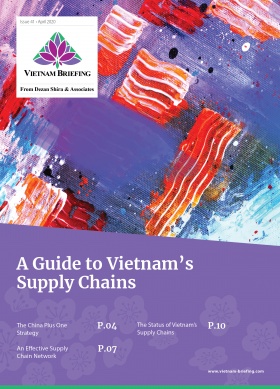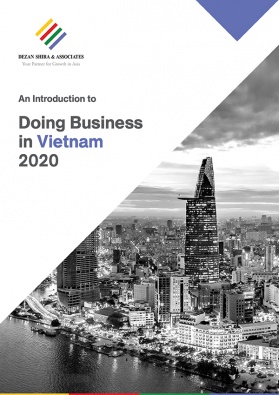Vietnam’s Regional Labor Market: Labor Cost, Workforce Optimization and HR Strategy
- Vietnam’s labor market varies across the country and can prove challenging for first-time investors.
- Businesses interested in Vietnam should be aware of the different regional landscape, labor pools, industries, and infrastructure among other factors best suited for their business needs.
- We highlight the opportunities and challenges for businesses looking to hire labor in the northern and southern parts of the country.
Vietnam has a population of over 97 million people spread over 330,000 square kilometers. The country is still predominately rural, with urban centers providing a home for just 35 percent of the population. Companies entering Vietnam for the first time often fail to account for regional variation in the labor market and invest in locations ill-suited to their industry.
Investors that take the time to explore Vietnam’s provinces will find opportunities to manage costs while maintaining productivity. Executives will benefit from understanding the cost differential between different provinces in Vietnam, but the real beneficiaries of a regional approach will be human resource (HR) departments and hiring managers. HR departments that understand what Vietnam has to offer will be much better positioned to recruit, onboard, and, where necessary, train new workers.
Vietnam’s investment landscape is broken into three main zones in the north, center, and south of the country. Out of these three provinces, investors typically end up investing in the north and south of the country.
Northern provinces
Vietnam’s northern provinces are well-positioned as a destination for China+1 manufacturing and is well known for heavy manufacturing, oil and gas, and more recently for high-end manufacturing processes, such as auto manufacturing. Investors focus a significant portion of their spending within the north of Vietnam in two provinces – Hanoi and Bac Ninh.
Hanoi
HR departments hiring in Hanoi will benefit from the provinces discounted wages and large workforce but may be required to spend more on training.
Workforce specialization and availability
Hanoi has a population of 8 million, while the labor force (age of 15 years and above) is around 3.8 million. The city is one of the most populated in the country and provides an ample workforce for a variety of industries. Companies operating in Hanoi report slightly lower levels of spending on recruitment than other northern provinces such as Bac Ninh. Key industries in Hanoi include textiles and garments, chemicals, agricultural products and food processing, mechanical manufacturing, and electronics.
Labor cost
Hanoi’s labor force is on the cheaper side with the average salary standing at just over US$400 a month. The city’s labor cost comes in below neighboring provinces, such as Bac Ninh, as well as Ho Chi Minh City in the south. Investors should assess the specific needs of their operations and the ability of Hanoi’s workforce to meet them to ensure that cost savings are realized.
Companies in Hanoi must also factor in the cost of operating in Hanoi and allocate a higher percentage of spending to training than in other areas of the country.
Optimizing HR Strategy in Hanoi
Investors setting up in Hanoi should assess their needs and conduct HR due diligence to better understand the ability of a local labor force to meet their needs. Companies that are unable to find skillsets that match their requirements must factor in the cost to train employees into their operating models. Investors that seek to outsource their training to vocational institutions should vet these institutions closely and situate operations within close proximity to ensure that training meets the company’s needs.
Bac Ninh
Bac Ninh was rated as the fourth-best province in this year’s Provincial Competitive Index. HR departments will benefit from Bac Ninh’s pools of skilled labor but may find labor to be more expensive than in neighboring Hanoi.
Workforce specialization and availability
Bac Ninh is located adjacent to Hanoi and is known as a hub for manufacturing. Firms in the electronics, information technology (IT), infrastructure development, chemical, and industrial automation industries will find Bac Ninh an attractive location. In addition, due to the presence of major manufacturers, supporting industries are also well established than in other areas.
Labor cost
Bac Ninh’s labor costs are slightly higher than those in Hanoi with an average salary of US$421 a month. As one of the leading FDI destinations in Vietnam, foreign investment has helped transform the region into an industrial hub making it one of the most competitive hiring markets in the country, along with Ho Chi Minh City.
Quality concerns
Bac Ninh’s specialization in manufacturing and concentration of supporting industries improves the quality of its talent pool relative to other provinces in Vietnam. Investors working in the province express a higher degree of confidence in the existing labor supply, are more confident in its vocational training programs, and spend less on training than in Hanoi.
Optimizing investments in Bac Ninh
HR managers and executives should pay close attention to existing clusters of supporting industries and production centers. The supply and skills of workers within close proximity to industrial zones will be higher than other areas of Bac Ninh. Recruitment usually peaks in the first and second quarters of the year for manufacturing companies.
Southern provinces
Vietnam’s southern labor pools are more diversified than their northern counterparts. Investment in services and a wider range of manufacturing provides access to more niche talents than in the north. Competition and recruitment demand in southern provinces are higher when compared to the northern and central provinces.
Ho Chi Minh City
HR departments hiring in Ho Chi Minh City will benefit from the wide range of labor available in the city but may find wages to be higher than in other areas of the country.
Labor Cost
Labor costs in Ho Chi Minh City are some of the highest in Vietnam. Manufacturing operations have all but left the city center and those remaining are forced to pay a premium for workers to account for increased living costs within the city. The level of experience of an employee will play a large role in their expectations.
Workforce specialization and availability
Ho Chi Minh City’s status as Vietnam’s commercial capital helps it to attract a steady supply of workers for a wide range of fields. On average, employers in Ho Chi Minh City receive an average of 10 more applications for open positions than similar positions in Binh Duong. Professional services, IT, and hospitality are key labor pools that have seen significant growth in the last decade.
Quality concerns
Investor satisfaction with labor quality in Ho Chi Minh City falls below neighboring Binh Duong province but above Vietnam’s national average. Much of this is attributable to the cities focus on emerging economic areas where education and corporate practices may be lagging behind those found in more developed markets. Companies working within the province turn to both recruitment and employee training to bring workers up to the standard that they expect.
Optimizing investments in Ho Chi Minh City Ho Chi Minh’s labor pools are at the cutting edge of what Vietnam has to offer but still lag behind those found in the home markets of many investors. HR departments benefit immensely from conducting initial interviews to gauge the qualifications of personnel and then crafting a training and recruiting strategy to fill in common gaps.
Binh Duong
Growing foreign investments has transformed the labor market in Binh Duong in the last decade, making it one of the most competitive in the region. Labor availability, cost, and productivity are the key attributes of the labor market.
Labor cost
Binh Duong’s labor costs are lower than Ho Chi Minh City at an average of US$444 a month but are still higher when compared to north Vietnam. In addition, the percentage of total business costs spent on labor training in the province is one of the highest in Vietnam. With the government prioritizing investments from high-tech industries, labor training costs may increase in the near future.
Workforce specialization and availability
Investor friendly provincial government policies and foreign investments has transformed Binh Duong into a major industrial hub. Major industries include electronics, mechanical engineering, pharmaceuticals, and chemicals. In addition, supporting industries has been a key driver of foreign investments. Labor availability in Binh Duong is low compared to Ho Chi Minh City, but higher than the national average.
Quality concerns
Labor quality in Binh Duong Province is higher when compared to Ho Chi Minh City. It is largely due to the presence of manufacturing industries, quality of vocational training, and labor exchange services in the province. Companies operating in the province need to work closely with vocational training establishments and labor exchange services to hire skilled labor.
Optimizing investments in Binh Duong
Hiring managers should take advantage of labor exchange services and vocational training institutions for recruiting skilled labor. In addition, industrial zones and supporting industries are a reliable source of trained workers. Employee retention should be a priority to reduce rehiring and training costs.
About Us
Vietnam Briefing is produced by Dezan Shira & Associates. The firm assists foreign investors throughout Asia from offices across the world, including in Hanoi and Ho Chi Minh City. Readers may write to vietnam@dezshira.com for more support on doing business in Vietnam.
- Previous Article COVID-19: Vietnam Issues Financial Assistance for Employers, Employees
- Next Article Festive Greetings from Vietnam Briefing







